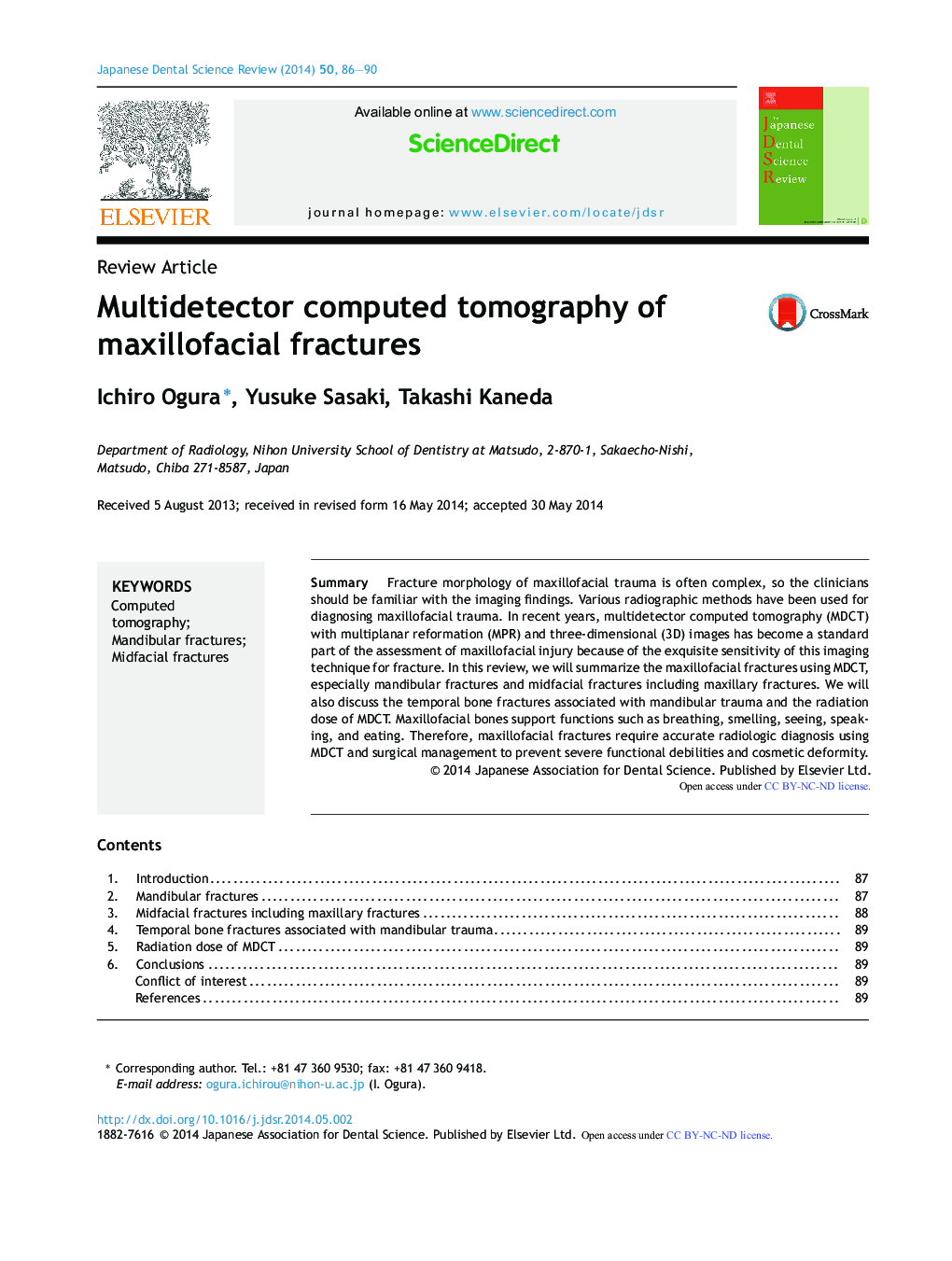| کد مقاله | کد نشریه | سال انتشار | مقاله انگلیسی | نسخه تمام متن |
|---|---|---|---|---|
| 3136171 | 1584672 | 2014 | 5 صفحه PDF | دانلود رایگان |
SummaryFracture morphology of maxillofacial trauma is often complex, so the clinicians should be familiar with the imaging findings. Various radiographic methods have been used for diagnosing maxillofacial trauma. In recent years, multidetector computed tomography (MDCT) with multiplanar reformation (MPR) and three-dimensional (3D) images has become a standard part of the assessment of maxillofacial injury because of the exquisite sensitivity of this imaging technique for fracture. In this review, we will summarize the maxillofacial fractures using MDCT, especially mandibular fractures and midfacial fractures including maxillary fractures. We will also discuss the temporal bone fractures associated with mandibular trauma and the radiation dose of MDCT. Maxillofacial bones support functions such as breathing, smelling, seeing, speaking, and eating. Therefore, maxillofacial fractures require accurate radiologic diagnosis using MDCT and surgical management to prevent severe functional debilities and cosmetic deformity.
Journal: Japanese Dental Science Review - Volume 50, Issue 4, November 2014, Pages 86–90
